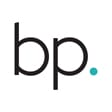Days Payable Outstanding (DPO)
Definition
Days Payable Outstanding (DPO) measures the average time a company takes to pay its invoices from suppliers and creditors, reflecting its payment practices and cash management efficiency. A higher DPO suggests that a company retains cash longer, which could be strategically beneficial for its liquidity. However, excessively stretching payments might risk supplier relations and operational stability. Conversely, a lower DPO indicates quicker payments, potentially improving supplier relationships and qualifying for discounts but decreasing cash on hand.
Introduction: Days Payable Outstanding in Developing a Pro Forma Financial Model
Incorporating Days Payable Outstanding (DPO) into a pro forma financial model is crucial for an accurate and comprehensive understanding of a company’s future financial position and cash flow strategy. A pro forma financial model, designed to forecast a company’s financial performance over a certain period, relies on various assumptions about operational activities, including how a company manages its payments to suppliers. DPO is a key component in this framework, as it directly affects cash outflows and working capital management.
A thoughtful projection of DPO in the model facilitates:
- Strategic Cash Management: By forecasting the average payment period, companies can strategically plan their cash outflows to optimize liquidity without jeopardizing supplier relationships or operational integrity.
- Working Capital Optimization: DPO projections help in planning the company’s short-term financial obligations and investments, ensuring that working capital is used efficiently to support ongoing operations and growth initiatives.
- Financial Planning Accuracy: Including DPO in financial models improves the accuracy of cash flow projections and financial planning, providing a clearer picture of the company’s financial health and its ability to meet short-term obligations.
Accurately projecting DPO involves analyzing historical payment patterns, current supplier terms, and industry standards. It’s a delicate balance between maintaining liquidity and fostering strong supplier relationships, crucial for operational continuity and competitive advantage. In the broader context of a pro forma financial model, DPO is interconnected with other components like inventory management (DIO) and receivables (DSO), offering a comprehensive view of a company’s operational efficiency and financial strategy.
Frequently Asked Questions
- How does industry type impact the typical range of Days Payable Outstanding (DPO) values?
Industries with longer supply chains or those reliant on custom orders may have longer DPO values compared to industries with shorter lead times and standardized products. Understanding industry benchmarks and norms is crucial for evaluating a company’s DPO performance within its specific sector.
Industries with Long DPO:
- Automotive Manufacturing: Automobile manufacturers often have extended payment terms with their suppliers due to the high-value components and long production cycles involved in vehicle manufacturing. DPO values in the automotive industry can range from 60 to 120 days or even longer.
- Construction: Construction projects typically involve large-scale contracts, customized materials, and lengthy project timelines. Contractors may negotiate extended payment terms with suppliers to manage cash flow during project execution. DPO values in the construction industry can vary widely but often fall within the range of 60 to 120 days.
- Retail (Big-Box Stores): Large retail chains with extensive inventories may negotiate favorable payment terms with suppliers to maintain adequate stock levels while preserving cash flow. DPO values in the retail industry can range from 45 to 90 days.
Industries with Shorter DPO:
- Technology (Software as a Service – SaaS): SaaS companies often have shorter payment cycles due to subscription-based revenue models and minimal physical inventory requirements. DPO values in the SaaS industry typically range from 15 to 45 days.
- Grocery Retail: Grocery stores operate with relatively short payment cycles due to frequent inventory turnover and perishable goods. Suppliers may offer shorter payment terms to ensure consistent product availability. DPO values in the grocery retail industry can range from 15 to 45 days.
- Textile Manufacturing (Fast Fashion): Fast-fashion retailers require quick inventory turnover to keep up with rapidly changing consumer trends. Suppliers may offer shorter payment terms to accommodate the fast-paced nature of the industry. DPO values in the textile manufacturing sector can range from 30 to 60 days.
It’s important to note that these ranges are generalizations, and actual DPO values can vary based on factors such as company size, market dynamics, and individual supplier relationships.
- How does DPO affect cash flow and working capital management?
A longer DPO allows a company to hold onto cash for a longer period, which can improve liquidity and provide additional funds for investment or operational needs. However, extending payment terms too far may strain supplier relationships or indicate underlying financial difficulties. Balancing DPO with other financial metrics is essential to maintain healthy cash flow and supplier relationships.

